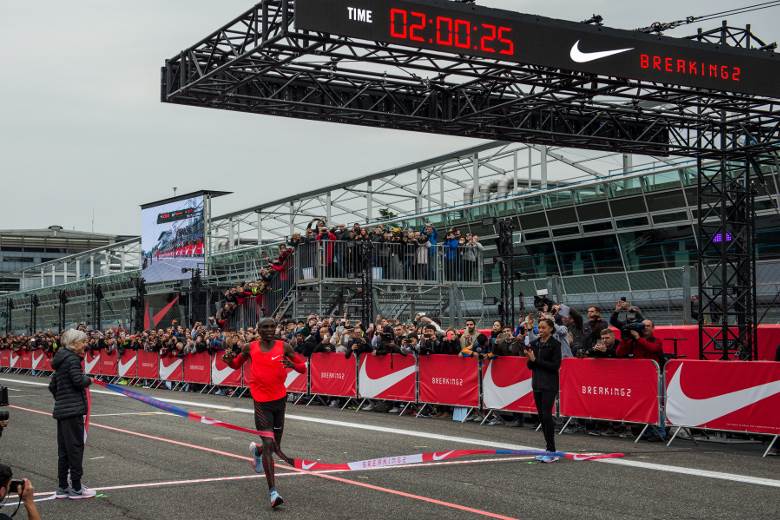Nike misses out on first sub-two-hour marathon
11/05/2017

Nike selected three leading long-distance runners for the project, reigning Olympic champion Eliud Kipchoge of Kenya; two-time Boston Marathon winner Lelisa Desisa of Ethiopia; and Zersenay Tadese of Eritrea, who holds the world record for the half-marathon.
After 17.5 laps of the 2.4km circuit, Mr Kipchoge crossed the line in a time of 2:00:25, agonisingly short of the target. He only needed to run each mile a second quicker to breach the two-hour barrier. There was still cause for celebration, however, as he had just completed the fastest ever marathon, knocking more than two and a half minutes off the previous best, the 2:02:57 achieved by his compatriot Dennis Kimetto at the Berlin Marathon in 2014.
The time will not stand as an official world record due to the use of 30 interchangeable pacemakers, who helped the three lead runners maintain the target pace. They also ran in a series of pre-defined formations to ensure their record-seeking counterparts were not adversely affected by wind resistance.
Mr Kipchoge said his incredible finishing time was the culmination of “seven months of dedication”. All three runners skipped spring marathon events in London and Boston so as to put all of their energy into the Breaking2 project. Mr Desisa eventually struggled to a time of 2:14:10, nearly ten minutes off his personal best, but Mr Tadese finished in 2:06:51, nearly four minutes quicker than his previous PB.
Nike developed a “complete product system”, including footwear, apparel and socks, to help the athletes with temperature regulation, aerodynamics and propulsion. Among the products was the Nike Zoom Vaporfly Elite running shoe, which features a light, responsive foam in the midsole to give better energy return and a “scoop-shaped” carbon fibre plate to add bending stiffness and prevent energy loss when bending at the toe.
Rival manufacturer Adidas is also targeting the first-sub two-hour marathon with its Sub2 project. A date for the attempt has not been disclosed, but the brand is believed to want it to take place in a competitive race setting, rather than in controlled conditions as Nike’s did.
A full round-up of the projects will be included in the May/June Issue of WSA magazine.
Image shows Mr Kipchoge crossing the finish line in Monza (credit: Nike).








